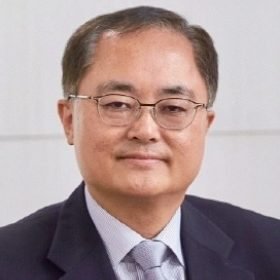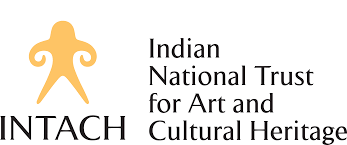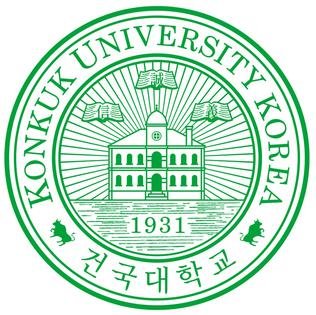People-Centric Heritage Voices
from the Asia-Pacific
GLOBINAR SESSION 1 focussed in the Asia Pacific region, will address what natural and cultural heritage means to civil society. We look for the experiences, in particular:
➜ Learn anecdotes related to community and natural and cultural heritage
➜ Understand what does natural and cultural heritage mean to communities
➜ Explore how to engage community and civil society in sharing responsibilities
➜ The future possibilities for filling the gaps among community, civil society and practitioners.
This session is held online, and hosted from Palazzo Coppini, supported by the Fondazione Romualdo Del Bianco, Firenze (Italy).
All events are announced in Universal Time Zone (UTC)!
Transpose to your local time with the button left / above!
Welcome
Patricia O'Donnell
President of OurWorldHeritage
Divay Gupta
Principal director of INTACH
Video screening of OurWorldHeritage #2021debate
Communities caring for heritage - video presentations
Moderated by Mizuko Ugo, Professor, Gakushuin Women’s College
Jin Yee Heo
Local community's participation in the natural heritage site of Jeju Volcanic Island and Lava Tubes (Republic of Korea)
Abha Narain
The Heritage of the People by the People: The Art Deco Precinct in Mumbai (India)
Helen Jarvis
Memorial site of Cambodia (Cambodia)
Vineeta Srivastava
Community Participation in Conserving Industrial Heritage of Railways (India)
Rui Miura
Living and working in a World Heritage town. Iwami Gizan Silver Mine (Japan)
Diane Menzies (will not attend the session in person)
Restoration of the Rongowhakaata IWI Landscape (New Zealand)
Roundtable
Moderated by Jihon Kim, Sr. Program Specialist, Korean National Commission for UNESCO and Adjunct Prof. Konkuk University
Jaeheon Choi
Professor at Konkuk University
Aruna Bagchee
Vernacular Heritage of Sari Weavers in India
Paul Rogers
Co-founder, Planet Happiness
Conclusion & looking ahead
Divay Gupta
Principal director of INTACH
Amy Wilson
Global Outreach Officer at OurWorldHeritage
Maaike Goedkoop
General Secretary at OurWorldHeritage
Abha Narain Lambah (born 1970) is an Indian conservation architect whose eponymous architectural practice has restored several of India's UNESCO World Heritage Sites like the Ajanta Caves, Golconda Fort and Mahabodhi Temple, and Mumbai's Victorian buildings like the Crawford Market, Royal Opera House, Asiatic Society of Mumbai Town Hall and Knesset Eliyahoo Synagogue. The firm's work has been recognised by 10 UNESCO Asia-Pacific Awards for Cultural Heritage Conservation. In 2007 her work of the Conservation of the Chamba Lakhang Buddha Temple in Basgo Ladakh won the Award of Excellence and the Convocation Hall Mumbai University the Award of Distinction UNESCO Asia Pacific Awards. In 2017, their restoration work on the Royal Opera House, India's only surviving opera house, was given the Award of Merit under the UNESCO Asia-Pacific Awards for Cultural Heritage Conservation.
Aruna Bagchee has a PhD in Sociology from the University of Pune, and a Masters in Public Policy from the Kennedy School of Government, Harvard University. She has worked in the Indian Administrative Service, gaining first hand experience managing competing rights/aspirations/and scarce resources - from the tehsil and district level up to State and Central government ministries. She then served for 4 years, as Governance Adviser to UK’s Department for International Development (DfID), based in Delhi. On promotion in DfID to Senior Governance Adviser, worked for 4 years in Indonesia, as part of a multi-agency team led by the World Bank. The multi-agency/multi-disciplinary team worked to strengthen the country’s decentralized governance under a program titled: Decentralization Support Facility (DSF).
Divay Gupta is a Heritage Conservation & Management expert with more than 25 years of experience. He heads the Architectural Heritage Division of INTACH, New Delhi. An Alumni of ICCROM, University of Birmingham & School of Planning & Architecture, he has been part of several prestigious projects in UK, USA, India, Afghanistan, Nepal and Cambodia. His restoration projects in Ladakh have won the SA UNESCO awards of Merit & Excellence. He is member of the ICC PV Govt of Cambodia, National Culture Fund and Advisory committee on World Heritage Matters to ASI, Government of India. He was also a visiting faculty and a member on the board of studies of Department of Architecture Conservation at SPA New Delhi
Hang Nisay holds a BA in Pre-history Archaeology (2009) and a MA in History (2022) from the Royal University of Fine Arts, with a thesis on the former M-13 prison, located in Kampong Speu province and one of the key prisons of the early Khmer Rouge. Han joined Tuol Sleng Genocide Museum in 2010, initially as administration staff, and later appointed as a tour-guide of the museum. In 2015, he was appointed as head of Exhibitions and then Projects, and became the director of the museum in 2022.
Helen Jarvis (PhD) has worked on issues relating to Tuol Sleng since the mid-1990s, especially with Yale University’s Cambodian Genocide Program and the Extraordinary Chambers in the Courts of Cambodia. She has been a Cambodian delegate to a number of Sessions of the World Heritage Committee, was a Member of the International Advisory Committee for Memory of the World and is currently Chair of the Register Sub-Committee of the Memory of the World Committee for Asia and the Pacific (MOWCAP) and part of the team preparing the nomination of “Cambodian memorial sites” for world heritage inscription. Relevant publications include Getting away with genocide? Elusive justice and the Khmer Rouge Trials (co-author), Modern Genocides Cambodia database; “Powerful remains: the continuing presence of victims of the Khmer Rouge regime in today’s Cambodia”, in Human Remains and Violence, and “S.21 archives as evidence: from early accounts until today” for Tuol Sleng: new perspectives on the legacy of the Cambodian genocide (in press).
Prof. Jaeheon Choi has worked in the field of human geography over 30 years. He got his BA and MA from Seoul National University and Ph.D. from geography in the University of Minnesota in 1993. Since 1995, He has been a professor of geography in Konkuk University, while establishing the World Heritage Studies program in the graduate school of Konkuk University in 2014. As a geographer, he was a founding member of Korean Urban Geographical Society and became the president of KUGS during 2012-2013. For cultural heritage, he has actively involved for several World Heritage nominations in Korea including Namhansanseong and Sansa, as well as being served as a ICOMOS World Heritage Panel member and Secretary General of ICOMOS Korea. He teaches classes about World Heritage including heritage planning, value-based approach for cultural heritage and so on. He is currently director of KU World Heritage Research Center and a chair of the WH program in Konkuk University, Seoul, KOREA.
Jihon Kim has worked in the field of international cultural heritage law at the Korean National Commission for UNESCO, while attending intergovernmental meetings as an advisory member of the delegation. Ms. Kim lectured at Sungkyunkwan University as an adjunct professor and was a research fellow at the International Institute for the Unification of Private Law (UNIDROIT). Since September 2019, she has been on secondment to the Permanent Delegation to UNESCO in Paris, France. She also has been serving as a public legislative officer at the Ministry of Government Legislation since 2018. Ms. Kim received her B.A. in Archaeology and Art History, and M.A. in International Studies from Seoul National University, and is expected to receive her Ph.D in winter 2020, whose topic is on the Non-State Actors in the international cultural heritage laws.
Jin Hyuck Jang received his master's degree in World Heritage Studies from Konkuk University and is currently in the doctoral program. He is member of OurWorldHeritage(OWH) Global Outreach team, and also was a member of 2021debate Heritage Places & Memory team. Now He works as a curator for the management of World Heritage Hwaseong at the Hwaseong Management Office.
Jin Yee, Heo was born and raised in Jeju island. She has been in charge of promoting natural world heritage Jeju for 12 years. She majored in public relations in her undergraduate and master's programs, but her interest in World Heritage has grown a lot, so She is now studying the World Heritage PhD program at the Konkuk University.
Mizuko Ugo, Ph.D. (Engineering), Architectural historian at Gakushuin Women’s College (Tokyo, Japan), she has been involved in cultural heritage conservation projects and research for European, Arab and Asian Countries at UNESCO and the Tokyo National Research Institute for Cultural Properties. Her current research focuses on built heritage conservation in war-affected areas.
Dr Paul Rogers is one of Asia-Pacific’s most experienced tourism for development practitioners. Completed in 1997, his PhD centered on tourism, conservation and development issues in Nepal’s Sagarmatha (Mt Everest) National Park. Paul is a long-term expert consultant with the United Nations World Tourism Organisation, the World Bank, ADB and numerous other international organisations, he has worked extensively in Nepal, Bhutan, Laos and the Greater Mekong Region, as well as Myanmar, North Korea, North-West Africa and Australia. Paul is co-founder of Planet Happiness a tourism and big data project of the non-profit, the Happiness Alliance. Inspired by several assignments in Bhutan, Planet Happiness focuses the attention of all tourism stakeholders on the well-being agenda; to use tourism as a vehicle for development that demonstrably strengthens destination sustainability and the quality of life of host communities.
Rui Miura was born in Nagoya, central Japan, but grew up in the US and South Africa. He started to work in a firm established in the World Heritage town of Omoricho (Iwami Ginzan) while he was still a student and is now a regular employee in charge of public relations. In particular, he is the editor in chief of the firm’s PR magazine “Miura henshushitsu” (From Miura editor’s office), which doesn’t advertise the firm’s products but the life style in Omoricho.













